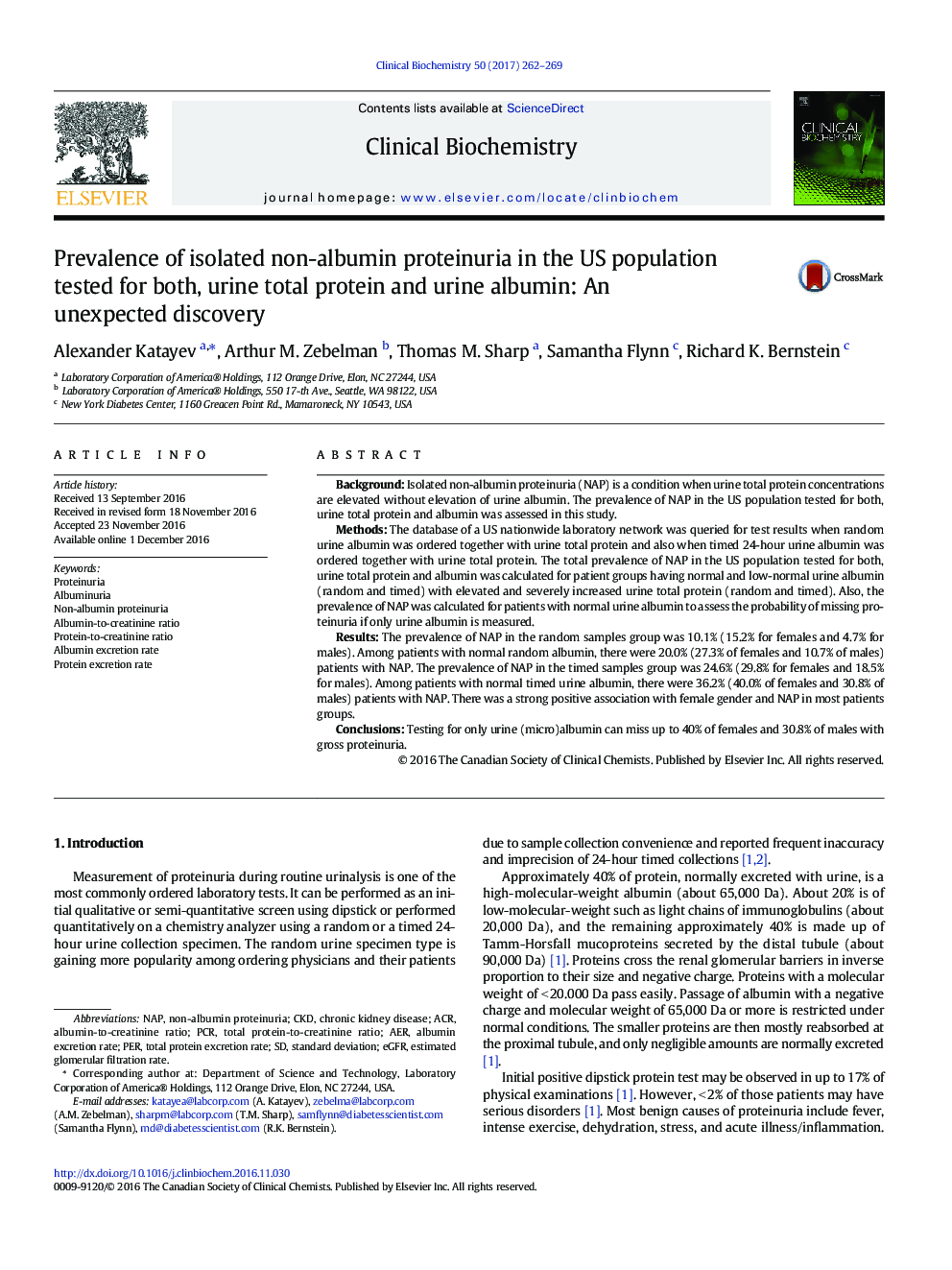| کد مقاله | کد نشریه | سال انتشار | مقاله انگلیسی | نسخه تمام متن |
|---|---|---|---|---|
| 5510119 | 1400483 | 2017 | 8 صفحه PDF | دانلود رایگان |
- We studied the prevalence of NAP in the US population tested for both, urine total protein and albumin.
- This study shows that the prevalence may be in the range of 10-20%.
- Measuring urine albumin alone may miss up to 40% patients with NAP in this population.
- Current guidelines advocate for only urine albumin testing.
- Urine total protein needs to be measured together with albumin.
BackgroundIsolated non-albumin proteinuria (NAP) is a condition when urine total protein concentrations are elevated without elevation of urine albumin. The prevalence of NAP in the US population tested for both, urine total protein and albumin was assessed in this study.MethodsThe database of a US nationwide laboratory network was queried for test results when random urine albumin was ordered together with urine total protein and also when timed 24-hour urine albumin was ordered together with urine total protein. The total prevalence of NAP in the US population tested for both, urine total protein and albumin was calculated for patient groups having normal and low-normal urine albumin (random and timed) with elevated and severely increased urine total protein (random and timed). Also, the prevalence of NAP was calculated for patients with normal urine albumin to assess the probability of missing proteinuria if only urine albumin is measured.ResultsThe prevalence of NAP in the random samples group was 10.1% (15.2% for females and 4.7% for males). Among patients with normal random albumin, there were 20.0% (27.3% of females and 10.7% of males) patients with NAP. The prevalence of NAP in the timed samples group was 24.6% (29.8% for females and 18.5% for males). Among patients with normal timed urine albumin, there were 36.2% (40.0% of females and 30.8% of males) patients with NAP. There was a strong positive association with female gender and NAP in most patients groups.ConclusionsTesting for only urine (micro)albumin can miss up to 40% of females and 30.8% of males with gross proteinuria.
Journal: Clinical Biochemistry - Volume 50, Issue 6, April 2017, Pages 262-269
